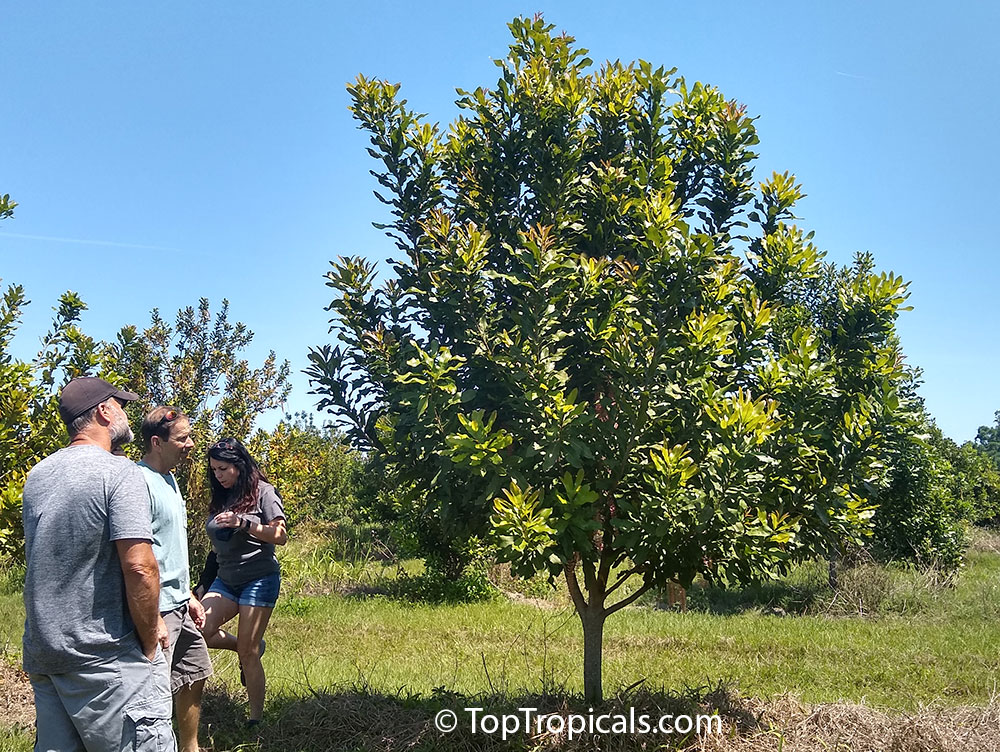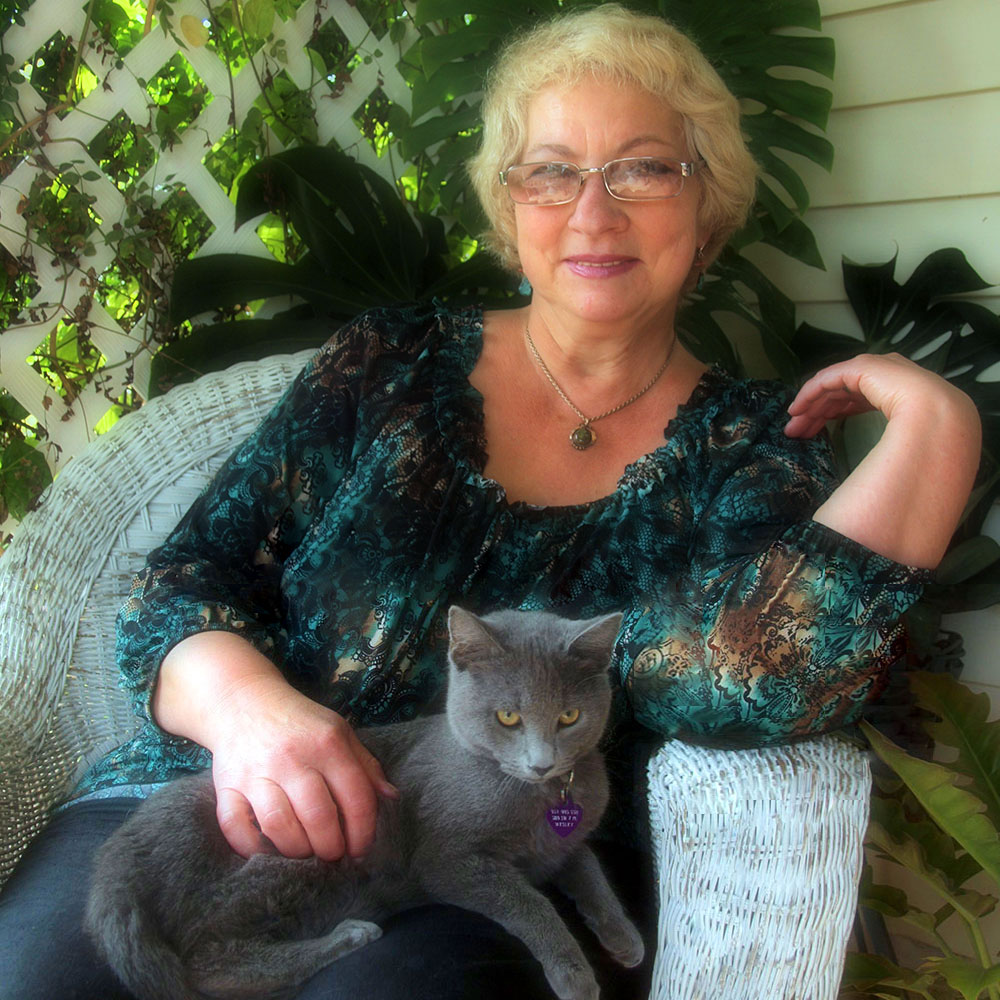Grow Your Own Food.
Macadamia: Hard Sweet Nut and Hardy Tree
Macadamia: Hard Sweet Nut and Hardy Tree
Articles > Macadamia
By Alex Butova, the Witch of Herbs and CatsAlexandra Butova is our columnist, journalist, and photographer, living in Riga, Latvia. She has has been with TopTropicals since Day One (2002), writing about magic plants, travel, and of course cats - from the CatNation she belongs to. Alex is in charge of TopTropicals.ru website.
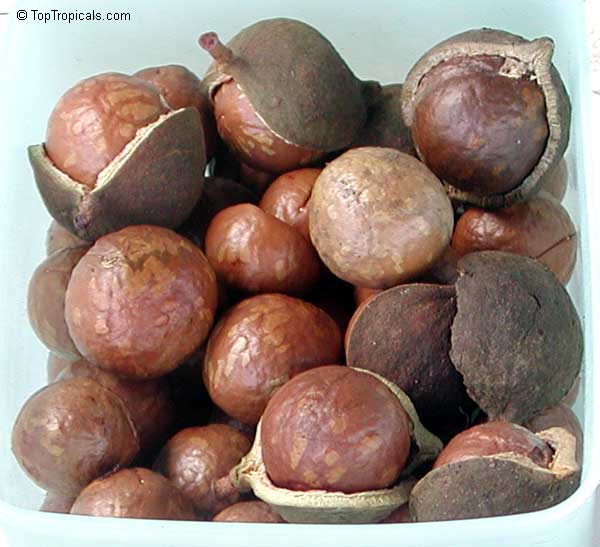
Harder than aluminum… and the most useful
Do you know what is the most hard-shelled nut in the world? And the most useful? Most rich in nutrients? May aid weight loss? They are Macadamia nuts!
...The shell material is five times harder than hazelnut shells and has mechanical properties similar to aluminum!..
Origin of Macadamia
Macadamia is a genus of four species of trees indigenous to Australia, and constituting part of the plant family Proteaceae. It is native to northeastern New South Wales and central and southeastern Queensland specifically. The nut was first commercially produced on a wide scale in Hawaii, where Australian seeds were introduced in the 1880s, and for some time they were the world's largest producer. Macadamia trees are now grown in various places around the world, such as Brazil, Costa Rica, Hawaii, New Zealand and South Africa.
Macadamia nuts garner premium prices as the demand surpasses current production...
Species of Macadamia
Three species are of commercial importance for their fruit: Macadamia tetraphylla, Macadamia ternifolia (rough-shelled Macadamia), and Macadamia integrifolia (smooth-shelled Macadamia). The two main species of macadamias, smooth shell and rough shell, have many cultivars of each as well as cross hybrids. The smooth shell ones are the main commercial cultivars because of the white kernel and mild flavor. The rough shell types are more cold-hardy with more sugar that will turn brown during the drying process and so are not as desirable for commercial use. Hybrids combine the best characteristics of both species.
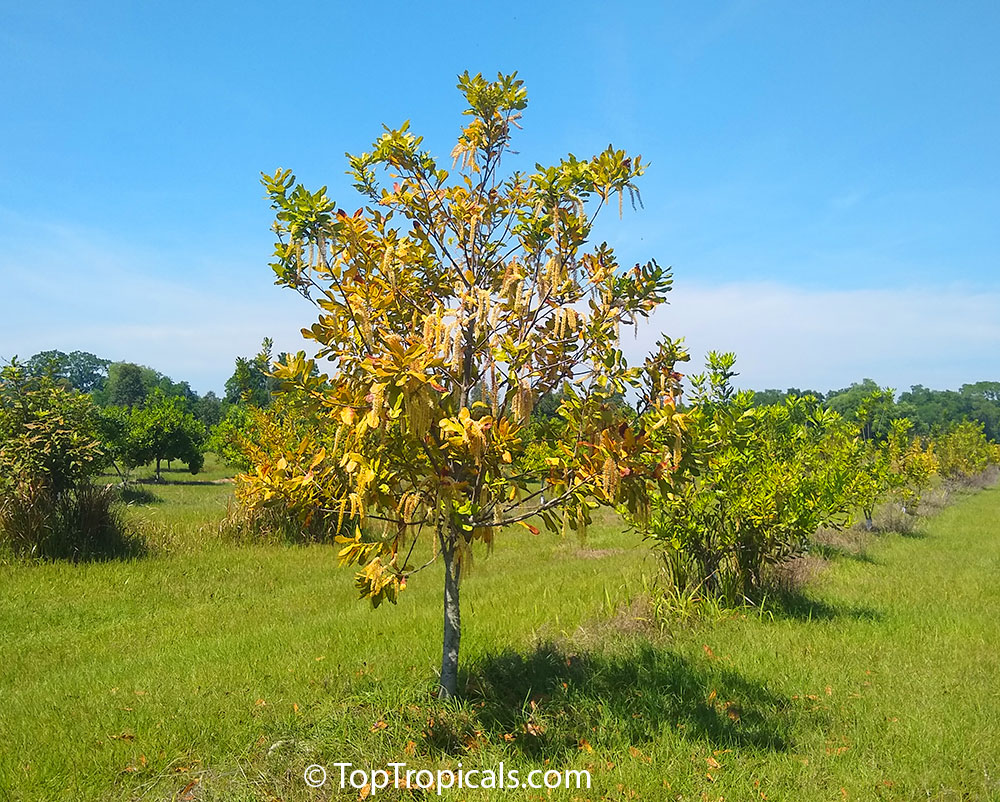
Macadamia Tree, Flower, and Nut
Macadamia is a small to medium sized tree, growing up to 15-20 ft in height. Leaves are dark green with prickly edges to 6" long and 2" wide in whorls of three. In spring, the tree is covered with many small white or pink flowers collected in racemes followed by woody, edible rounded fruit (6-7 months from flower to nut).
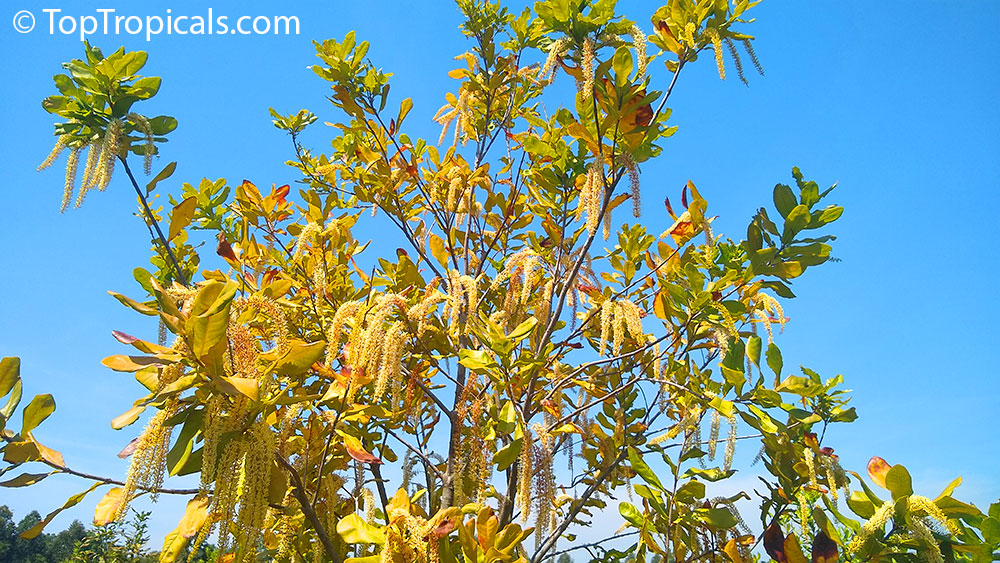
There is a leathery outer husk that splits open revealing the very hard-shelled nut, 1/3 to 1 inch in diameter. The nutshell ("coat") is particularly tough. The shell material is five times harder than hazelnut shells and has mechanical properties similar to aluminum!
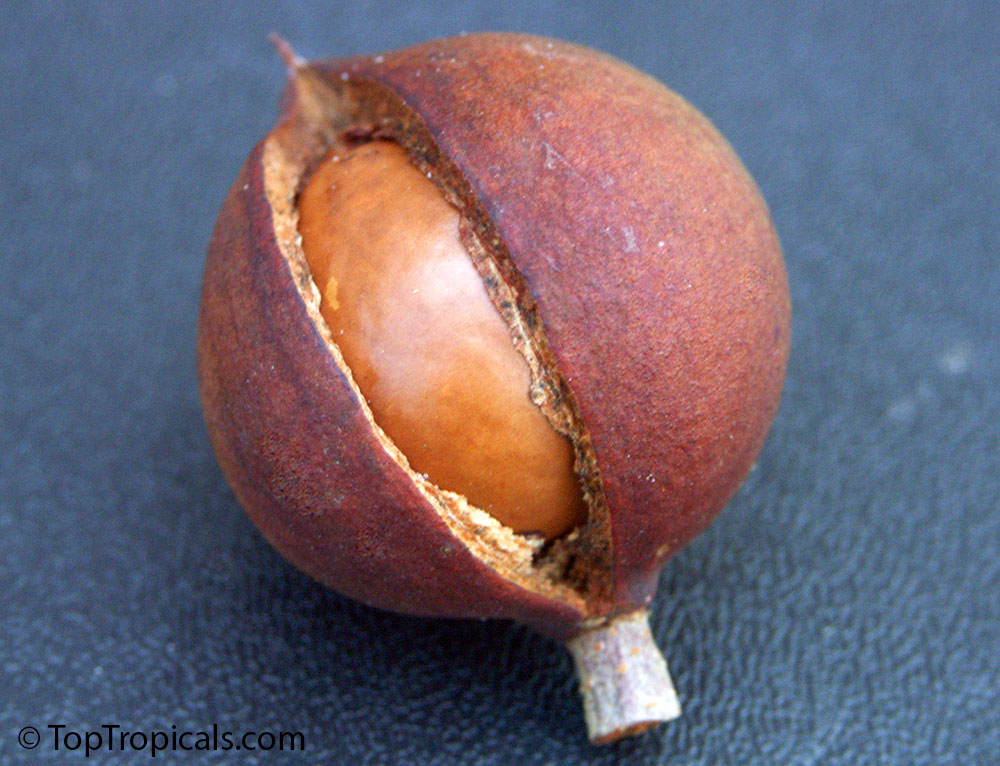
Health benefits of the tasty nut
Macadamia nuts have a subtle, butter-like flavor and creamy texture. Macadamia nuts are especially difficult to crack, requiring 300 pounds of pressure.
The nuts have many great qualities. Like most other nuts, macadamia nuts are rich in nutrients and beneficial plant compounds. They’re also linked to several benefits, including improved digestion, heart health, weight management, and blood sugar control.
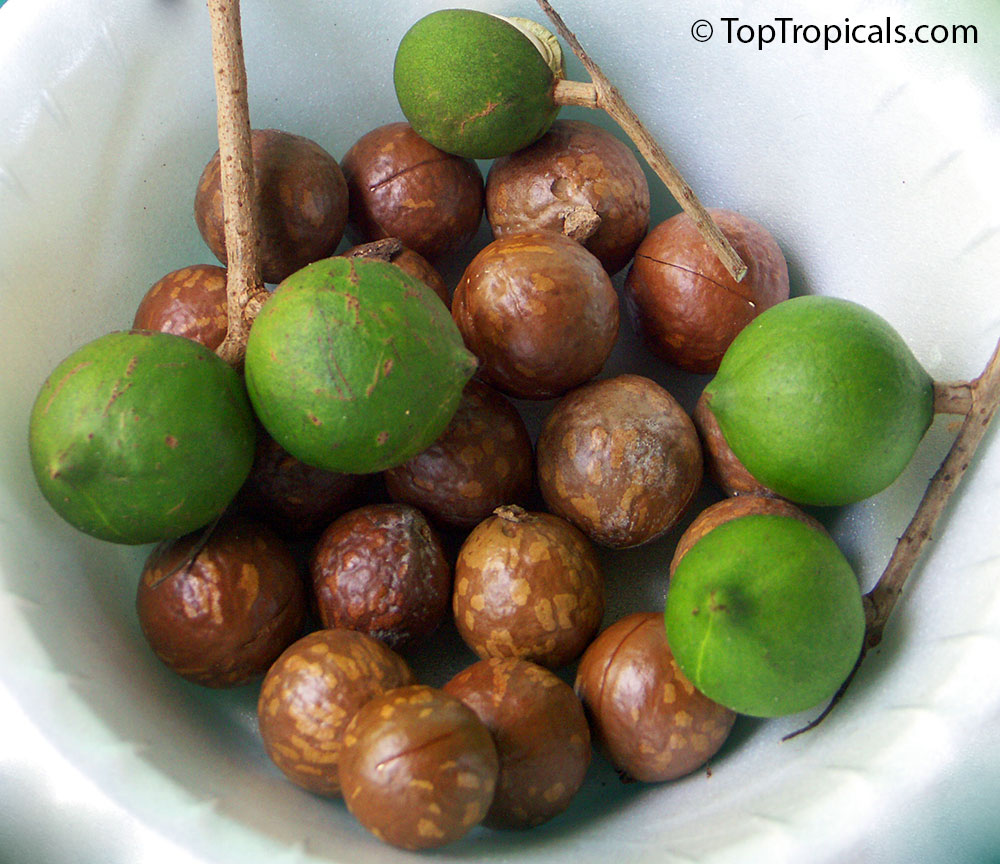
These nuts are calorie-rich nuts that are high in healthy fats, vitamins, and minerals. Macadamia nuts are also rich in monounsaturated fats, a type of fat that may boost heart health by lowering your total and LDL - (bad) cholesterol levels.
These nuts are low in carbs and sugar and have a moderate fiber content. This combination makes them unlikely to spike your blood sugar levels, which may be especially beneficial for people with diabetes.
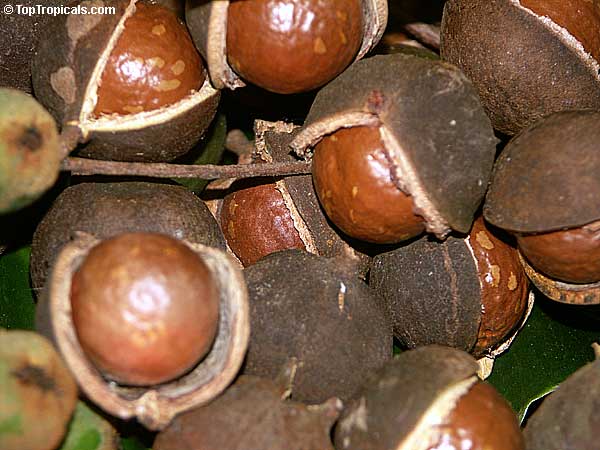
Like most nuts, macadamia nuts are a great source of antioxidants. Antioxidants neutralize free radicals, which are unstable molecules that can cause cellular damage and increase your risk of conditions like diabetes, Alzheimer’s disease, and heart disease.
Furthermore, this nut is rich in tocotrienols, a form of vitamin E with antioxidant properties that may help lower cholesterol levels. These compounds may even protect against cancer and brain diseases.
Macadamia nuts are rich in heart-healthy monounsaturated fats. Eating small amounts each day may help reduce heart disease risk factors, such as high cholesterol and inflammation. The high concentration of palmitoleic acid makes it particularly beneficial for dry or more mature skin. As well as its softening and moisturizing properties, macadamia oil can also help in the healing of mild wounds. The oil has also been shown to exhibit significant benefits in hair care products. It is easily absorbed into the hair follicles and scalp which can strengthen the hair.
Despite being rich in calories, macadamia nuts may help you lose weight. This may be partly explained by their amounts of protein and fiber, two nutrients known to reduce hunger and promote feelings of fullness. Macadamia nuts are a versatile addition to most diets. They can be eaten whole, ground, raw, roasted, or as a nut butter and make for an interesting addition to main courses, snacks, and desserts.
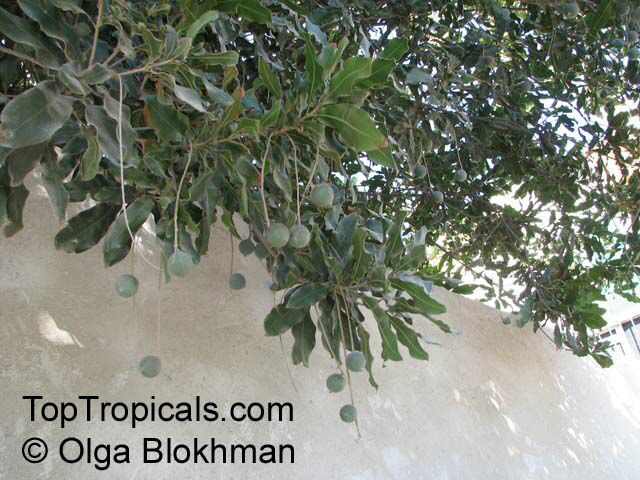
The trees are also grown as ornamental plants in subtropical regions for their glossy foliage and attractive flowers. The flowers produce a well-regarded honey. Macadamia nuts are often fed to hyacinth macaws in captivity. These large parrots are one of the few animals, aside from humans, capable of cracking the shell and removing the nut.
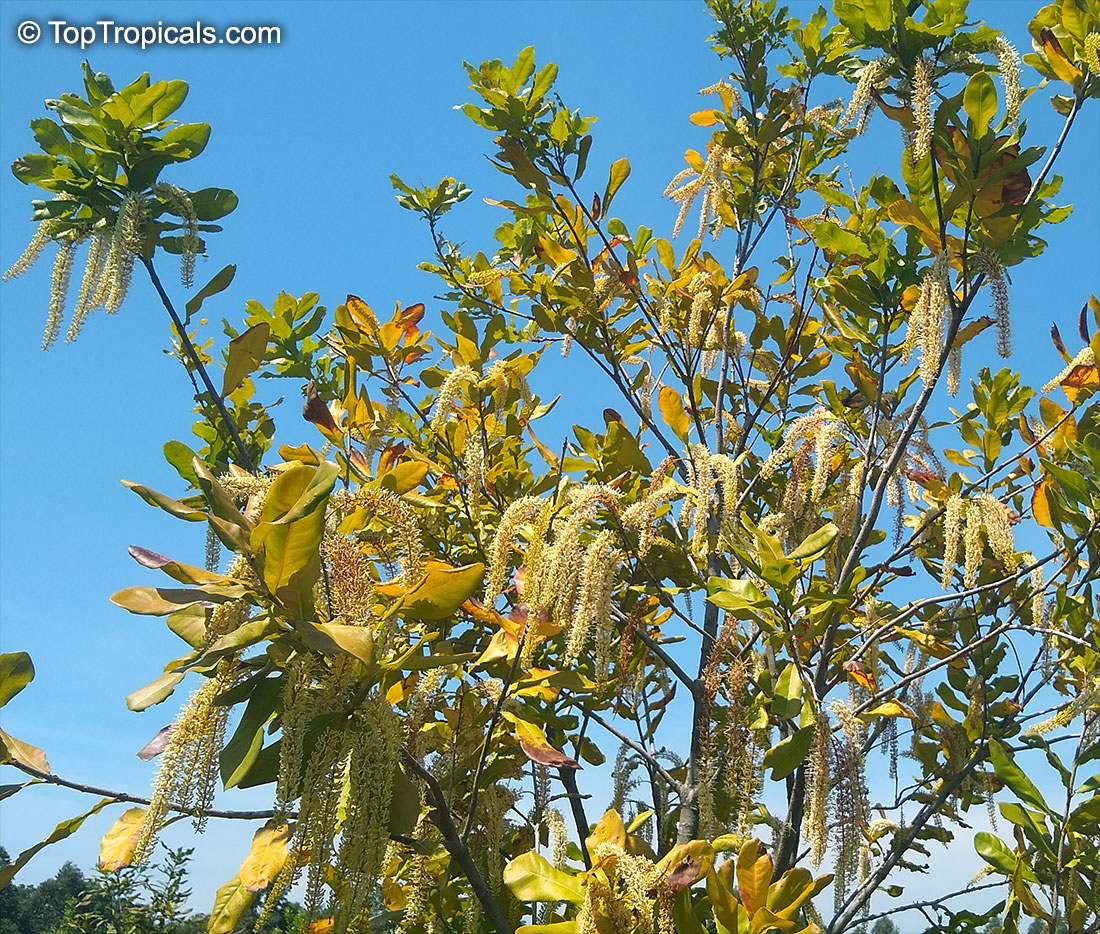
Macadamia is a great choice for subtropical climate
Are you searching for a nut that you can grow in cooler subtropics like Central Florida? This is the one. It looks hopeful as a new alternative crop for Florida growers. Macadamia nuts are most delicious and popular sweet nuts that are so expensive... They can be produced and enjoyed in your garden! Macadamia is cold hardy, fast growing, tolerates all Florida soils and very productive. It likes lots of water, will live through some flooding, as well as some drought once established. Older trees can survive cold winters with a little die back, but young trees will need to be protected from cold temperatures below 25-26F.
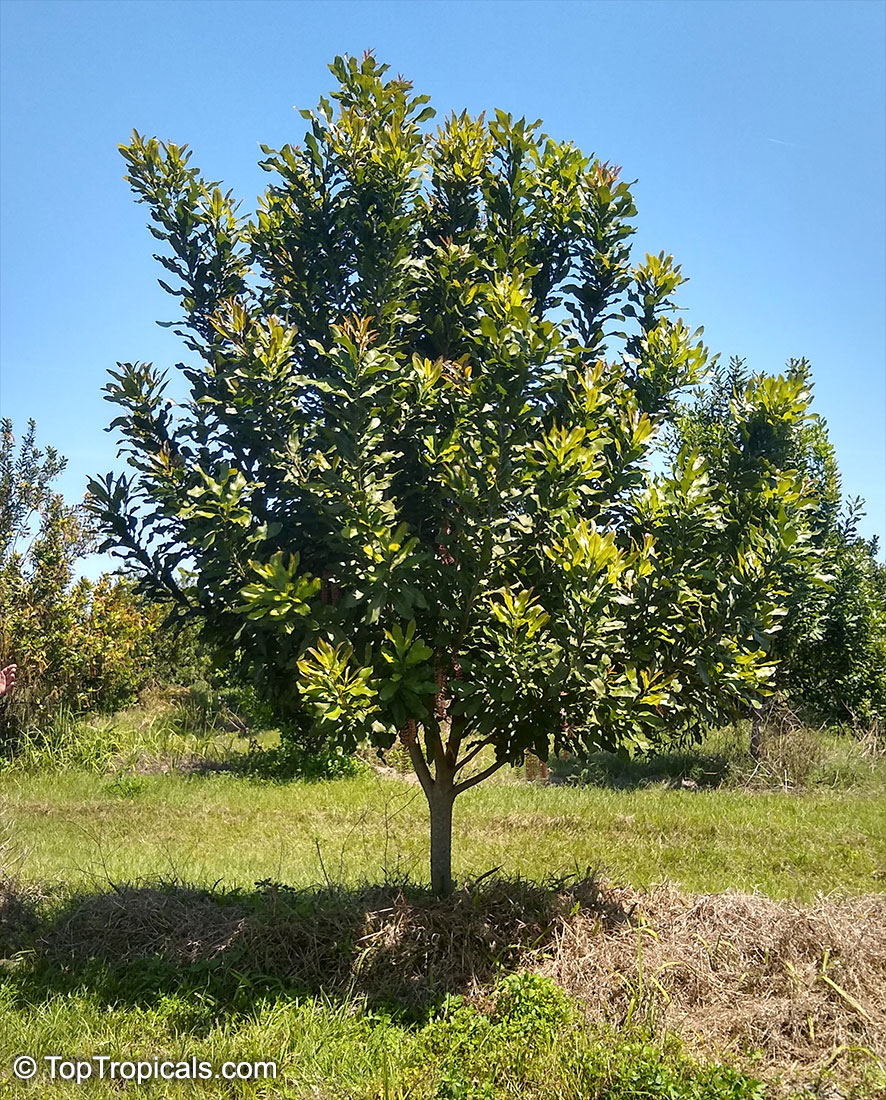
Care of Macadamia Tree
Planting. Space trees 15' apart and 20'-25' between rows.
Light. Trees can tolerate full sun to partial shade.
Soil. Dig hole twice as large as pot and mix well drained organic material with dirt. Ideal pH is 5.5 so they like the soil to be somewhat acidic. Plant in a well drained area. Do not use heavy or claylike dirt. Make a ring around the tree to retain water.
Water. Water frequently for the first 3 months, after that they can tolerate dry periods.
Fertilizer. You may use micronutrients soon after planting especially iron, zinc and copper as macadamias usually are deficient in these.
Use ONLY liquid fertilizer. DO NOT OVER FERTILIZE! Macadamia plants need special fertilizer program for successful root development and production. Use only liquid fertilizer Sunshine Robusta and apply microelements Sunshine SuperFood on regular basis - they are essential for this plant health.
Pruing. Prune lower branches for the first 3 or 4 years, remove suckers as they appear. It's a good idea to prune branches growing towards the middle of the tree or growing downward.
